Self-driving cars promise safer roads, yet AI self-driving cars accidents still worry many drivers. Recent data shows that 43% of Americans feel unsafe about riding in driverless vehicles.
We’ll explore five proven fixes that make autonomous vehicles safer on our roads. These solutions will change how we think about self-driving safety.
Key Takeaways
Self-driving cars have 27% fewer crashes than human-driven cars, with Tesla’s Autopilot showing one crash per 4.31 million miles versus human drivers’ one crash per 484,000 miles.
Recent data shows humans cause 69% of crashes with self-driving cars, while AI vehicles record zero deaths per million miles driven. Between May and September 2022, Tesla had 10 fatal crashes, sparking safety debates.
Bad weather causes 22% of autonomous vehicle crashes. Rain, snow, and ice block vital sensors. Poor road signs and faded markings also confuse self-driving cars’ detection systems.
Regular software updates and proper maintenance help prevent crashes. The NHTSA requires strict reporting of accidents. New sensor tech helps cars spot dangers in tough weather.
Advanced AI now uses deep learning to make split-second choices. Cars share road risk data through V2X networks. 5G and LIDAR sensors help predict and avoid crashes before they happen.
Table of Contents
Self-Driving Car Accident Statistics

Recent data from the National Highway Traffic Safety Administration shows self-driving cars have 27% fewer crashes than human-driven vehicles. Tesla’s Autopilot system reports one crash per 4.31 million miles driven, while human drivers crash once every 484,000 miles.
Accident rates compared to human-driven cars
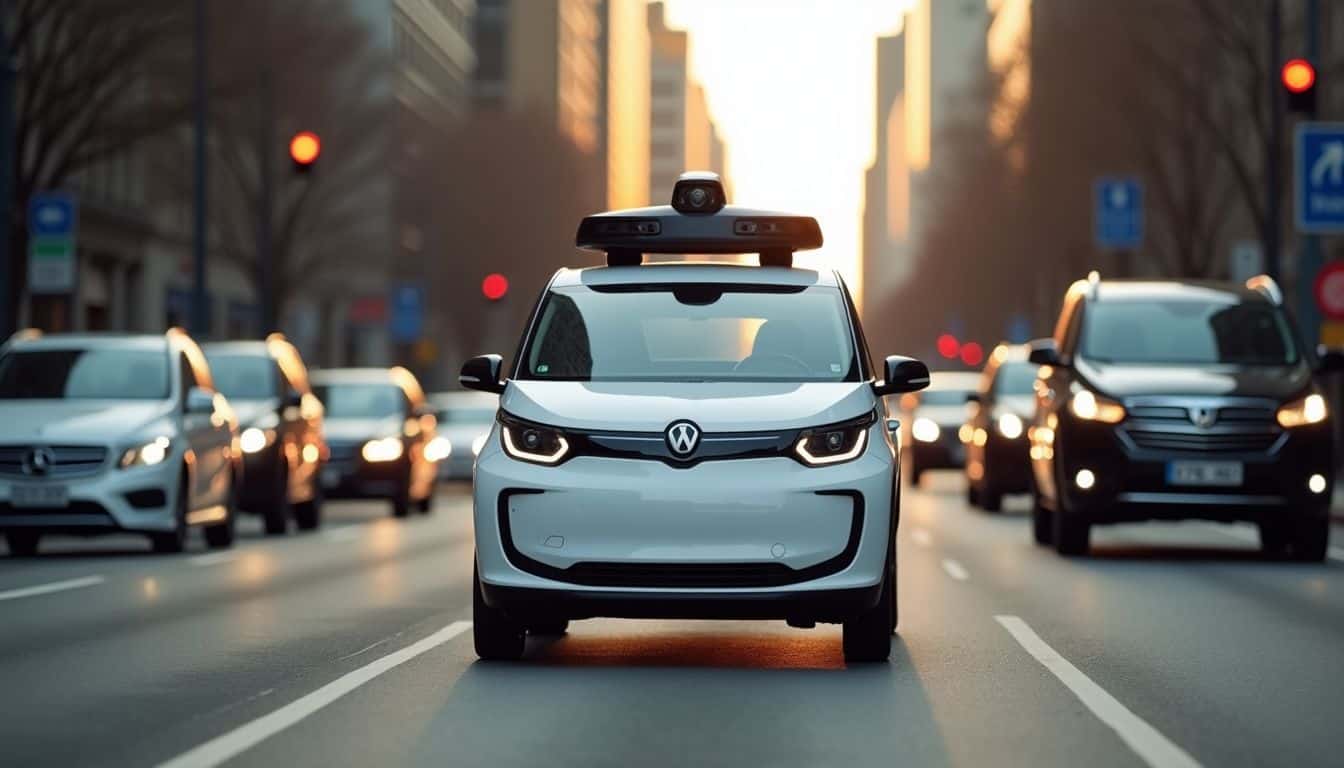
Self-driving cars show mixed safety results compared to human drivers. Raw data reveals higher crash rates for autonomous vehicles, yet deeper analysis points to interesting patterns. According to a car accident lawyer, the statistics paint a nuanced picture of AI driving safety.
| Metric | Self-Driving Cars | Human Drivers |
|---|---|---|
| Crashes per Million Miles | 9.1 | 4.1 |
| Ride-Hail Crash Rate (CPMM) | 23.0 | 50.5 |
| Fault in Crashes | 10% | 69% |
| Injuries per Million Miles | 0.06 | 0.24 |
| Fatalities per Million Miles | 0 | 0.01 |
Key findings from the data:
- AI vehicles record zero fatalities per million miles
- Human drivers cause nearly 7x more crashes than self-driving cars
- Autonomous systems show lower injury rates
- Ride-hail services see better safety with AI drivers
- Machine learning continues to improve these statistics monthly
Notable crash incidents involving autonomous vehicles
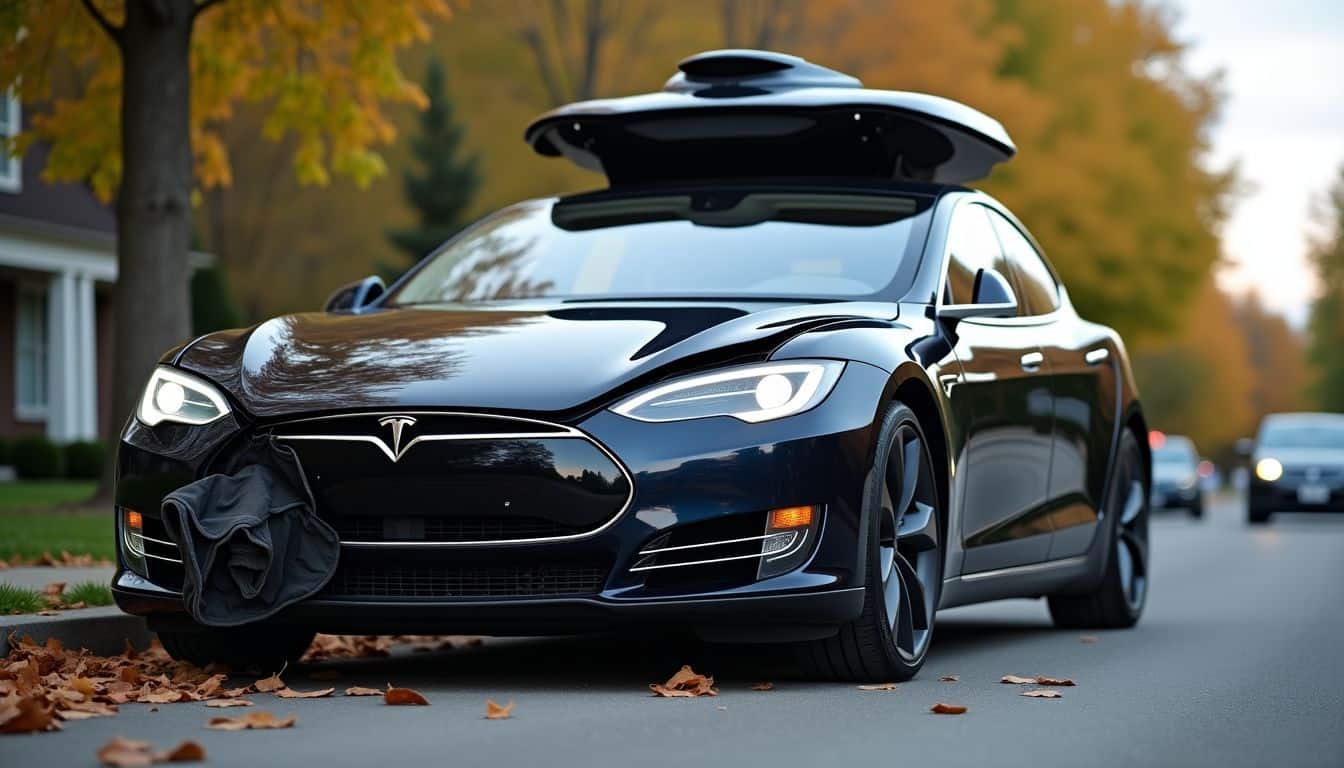
Raw accident numbers tell only part of the story. The real impact becomes clear through specific crashes that changed the autonomous vehicle industry. Tesla vehicles led the tragic count with 10 fatal crashes between May and September 2022.
These incidents sparked major debates about AI car safety protocols.
Safety isn’t automatic – even with autonomous vehicles.
The most notable incident occurred in March 2018, marking a dark milestone in driverless car history. Elaine Herzberg lost her life in Arizona after being struck by an Uber test vehicle – the first pedestrian death linked to autonomous driving.
Waymo, another key player, reported 150 crashes from July 2021 to August 2023. Tesla’s driver-assist systems were involved in 273 accidents in 2022, with their Autopilot beta feature present in 70% of cases.
The National Highway Traffic Safety Administration tracked 400 crashes involving partial automation systems that same year. Uber’s testing program faced its own challenges, recording 37 crashes during their autonomous vehicle trials.
Causes of Self-Driving Car Accidents
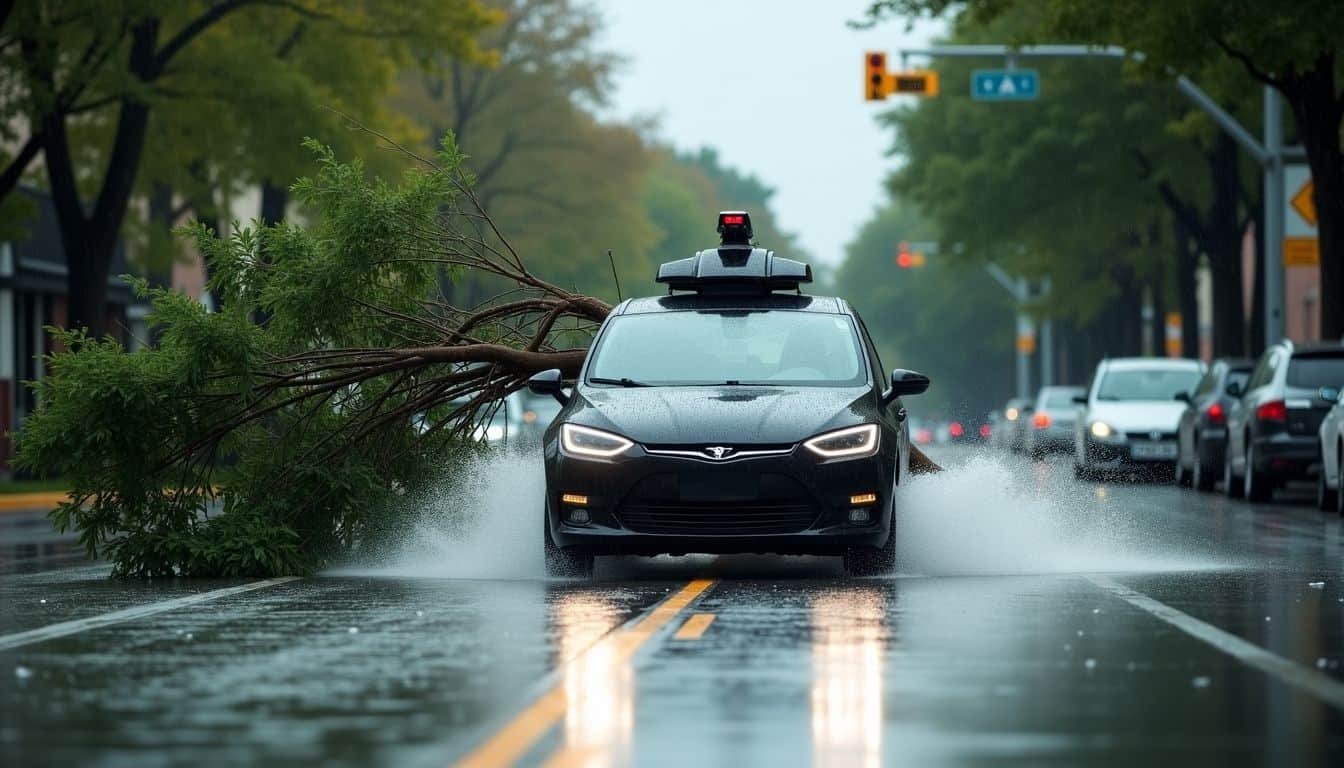
Self-driving cars face five major risks on today’s roads. Software glitches, poor weather conditions, and road hazards can trigger accidents in autonomous vehicles, making safety a top priority for AI developers and carmakers.
Technology errors and system malfunctions
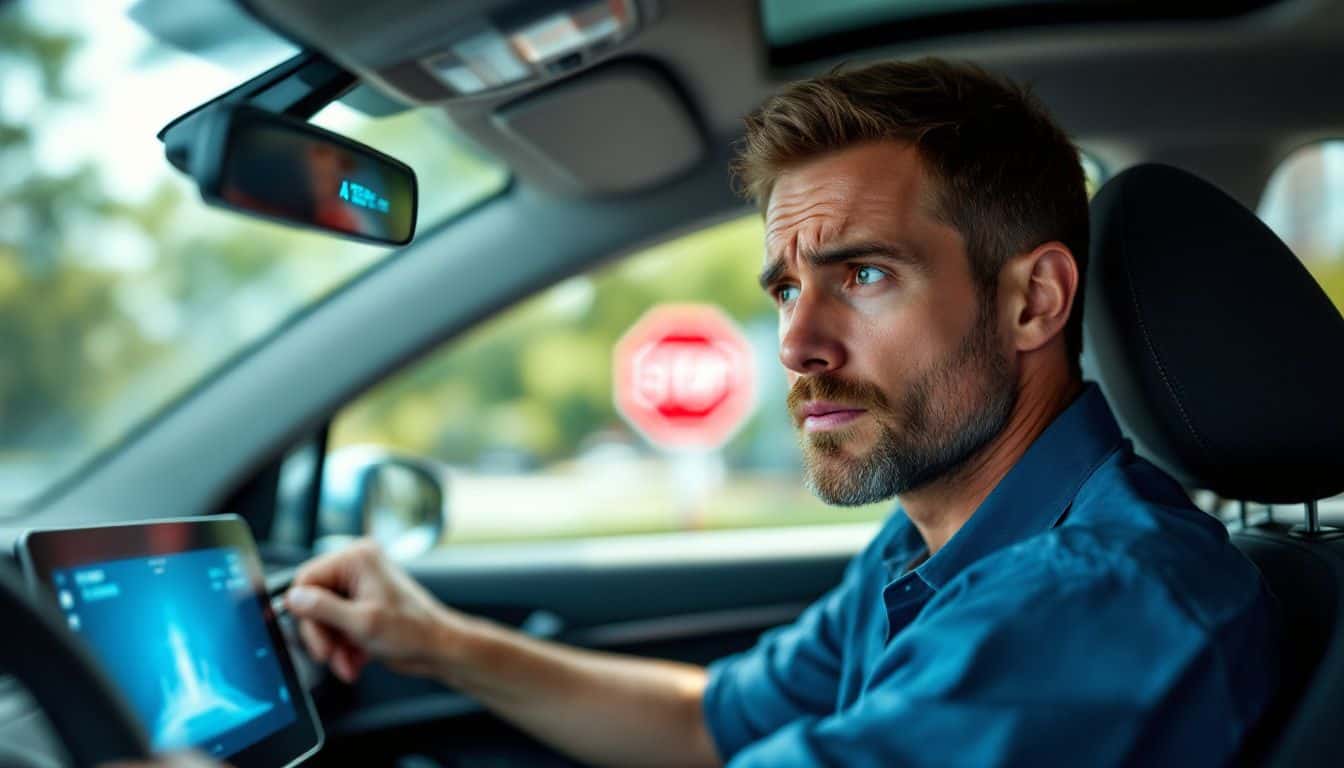
Technical glitches plague AI driving systems in many ways. Speed limit sensors fail to detect changes on roads, leading to dangerous speed issues. The car’s computer can misread traffic signals or road signs, causing risky decisions.
System bugs also create problems with sudden acceleration or braking, putting passengers at risk.
Automated systems face major challenges in spotting and reacting to unexpected events. Pedestrians and animals move in ways that confuse AI systems, raising crash risks. Fire hazards exist due to electrical system failures in these high-tech vehicles.
Recent tests show that current AI tech still needs work to match human reaction times in complex traffic situations. These issues demand better fail-safes and backup systems to protect riders.
Human interference or misuse
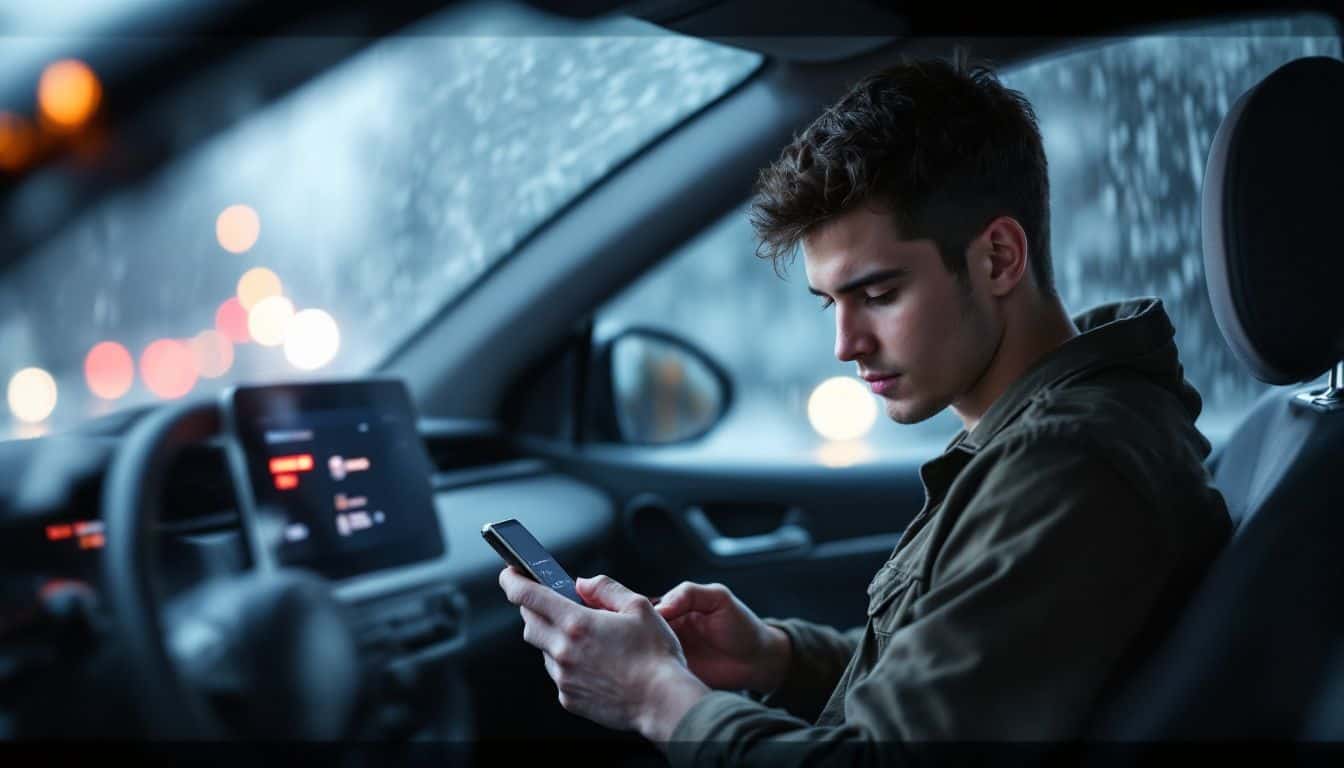
Human drivers cause most accidents with self-driving cars. Data shows humans were at fault in 69% of crashes involving autonomous vehicles. People often put too much trust in self-driving systems or ignore warning signals.
Distracted drivers fail to take control when needed, especially during bad weather or complex road conditions.
The biggest threat to autonomous vehicle safety isn’t the technology – it’s the human factor.
Self-driving cars face real challenges from human actions. Construction zones with temporary signals and moving equipment can confuse AI systems. Road workers and changing traffic patterns create unexpected situations.
The autonomous driving system needs constant human oversight to prevent crashes with lane dividers or other fixed objects. Many accidents happen because drivers misuse driver assistance features or don’t understand their limits.
Cybersecurity threats

Self-driving cars face major security risks from cyber attacks. Hackers can break into AI systems and mess with GPS data, sending vehicles to unsafe places. Bad actors inject fake data into vehicle sensors, making cars see things that aren’t there or miss real dangers like traffic lights.
Tesla’s Executive Mode showed big security gaps that put drivers at risk. These attacks threaten both single cars and whole traffic systems.
Malware poses a serious danger to autonomous vehicles’ core functions. Criminals can mess with software updates and take over vital systems like brakes. The constant internet connection these cars need makes them open targets.
GPS spoofing tricks navigation systems into following wrong routes. Such attacks can lead to crashes, car theft, and major traffic problems. The mix of AI dependency and online connectivity creates weak spots that hackers love to target.
Weather-related challenges
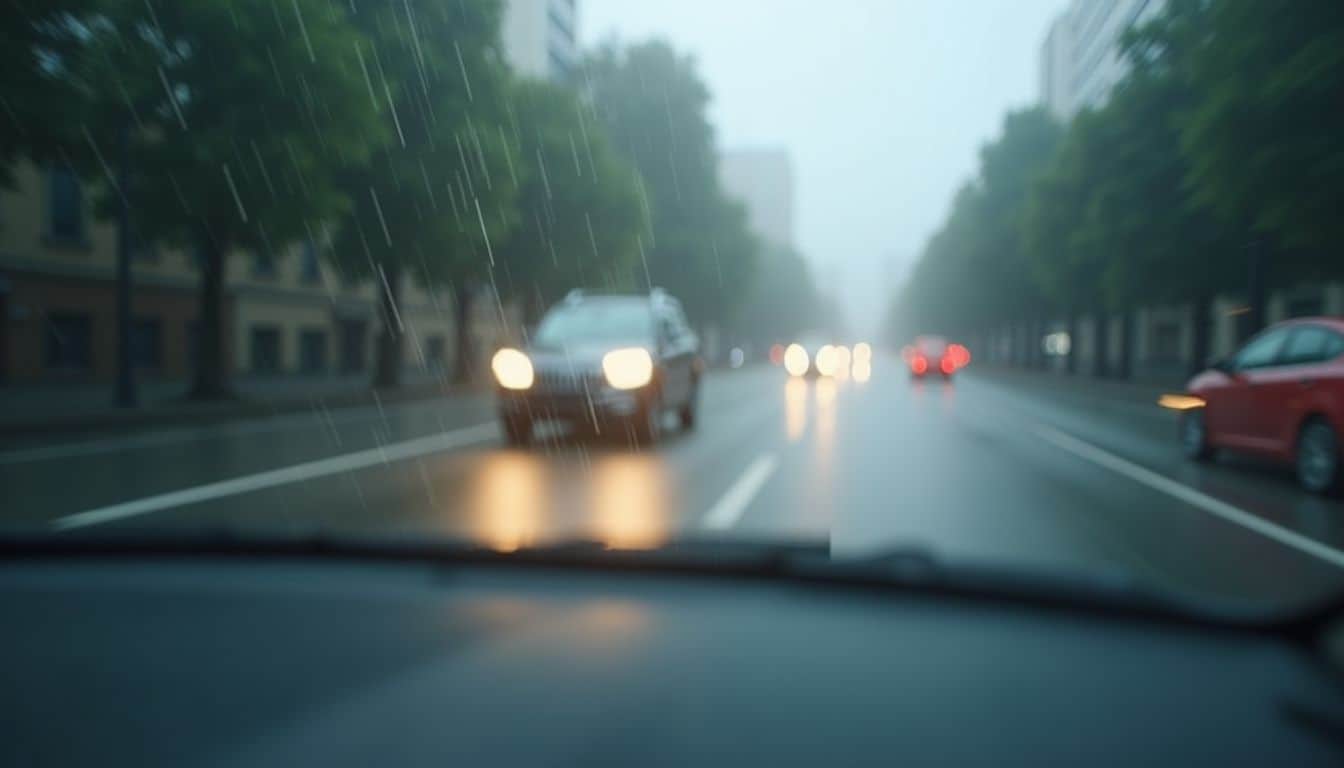
Bad weather creates major problems for autonomous vehicles on the road. Data shows that 22% of car crashes happen due to weather issues, which puts driverless cars at high risk. Rain, snow, and ice can block sensors and cameras that these vehicles need to drive safely.
Heavy storms make radar systems work poorly, sometimes forcing automated driving systems to stop working completely.
Strong winds and icy roads pose extra risks for artificial intelligence driving systems. The sensors in autonomous vehicles struggle to work right in thick fog or heavy rain. These weather issues affect basic safety features like forward collision warning and automatic emergency braking.
Weather data must be part of making better driverless cars to keep roads safe and make people trust this technology more.
Poor road infrastructure
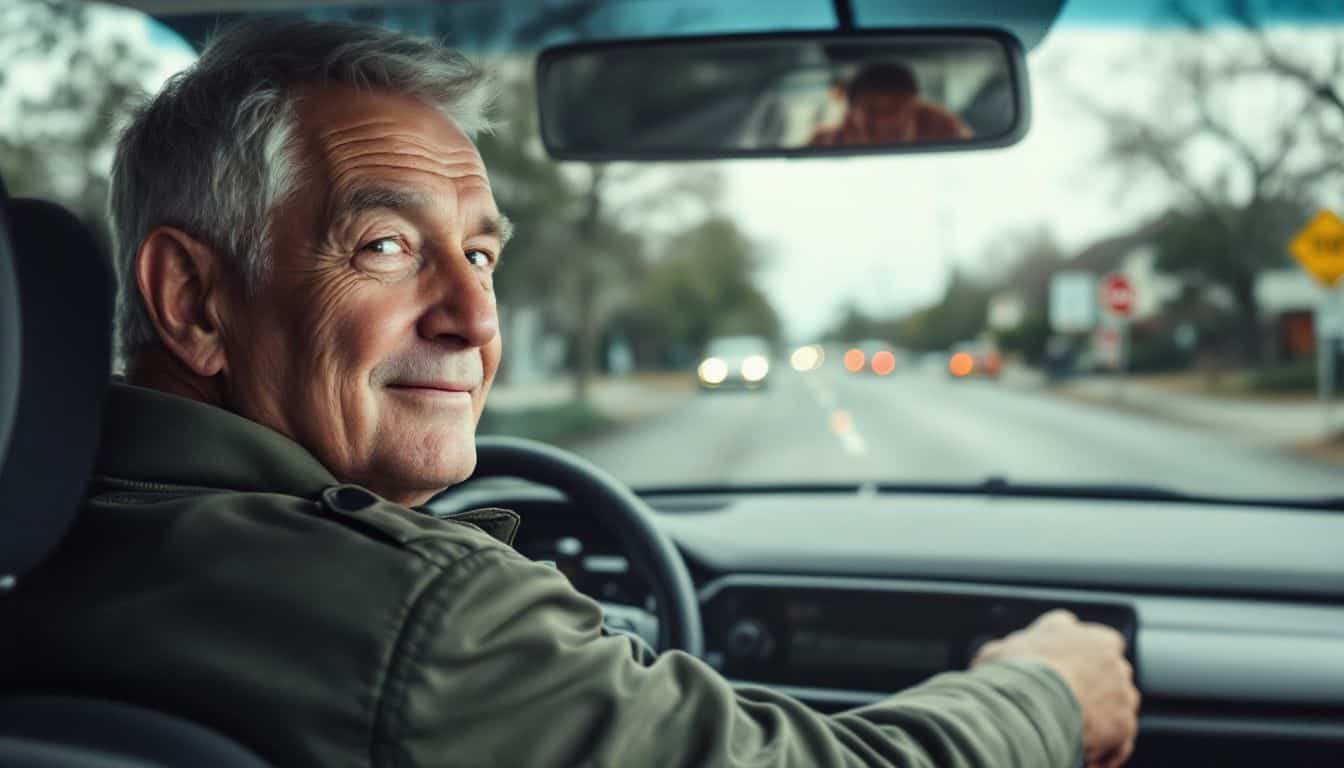
Poor road infrastructure creates major problems for self-driving cars. Many roads lack clear signs and markings that autonomous vehicles need to operate safely. Missing stop signs and faded crosswalks force these vehicles to make risky decisions.
Traffic management systems in developing countries often can’t provide real-time updates to self-driving cars.
Road quality affects how autonomous vehicles perform their basic tasks. Self-driving cars rely on lidar and radar technology to detect road features and navigate safely. Broken pavement, unclear lane markers, and missing traffic signals confuse these detection systems.
This confusion leads to unsafe driving conditions for both autonomous and human-driven vehicles. Better road infrastructure must support advanced driver assistance systems to improve safety standards.
Liability in Self-Driving Car Accidents
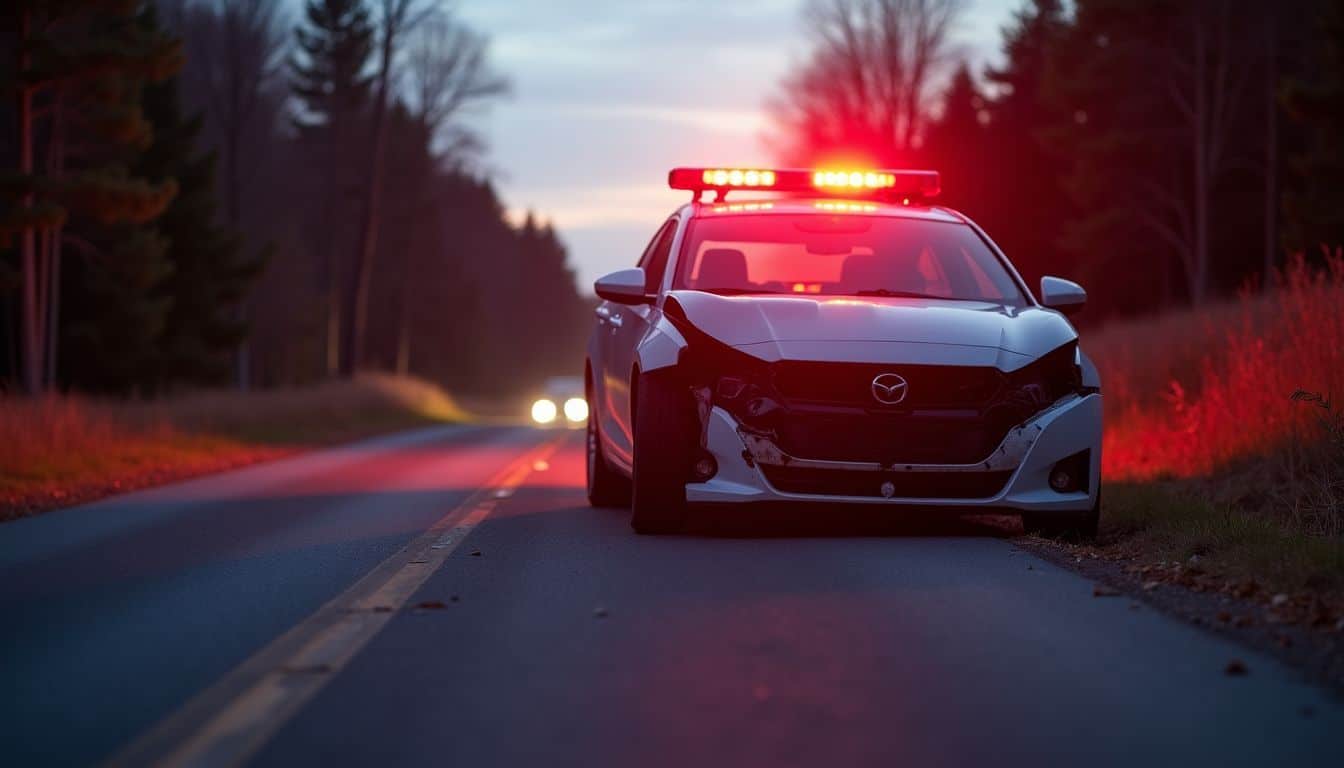
Self-driving car accidents create complex legal questions about who pays for damages. The mix of human drivers, carmakers, and software companies makes it hard to pinpoint who bears the blame when crashes happen.
Product liability for manufacturers
Product liability laws put strict rules on self-driving carmakers. These laws hold companies responsible for any tech glitches or sensor failures that cause crashes. Manufacturers must test their vehicles fully and keep software up-to-date to avoid legal trouble.
The National Highway Traffic Safety Administration (NHTSA) watches these companies closely to ensure public safety.
Legal blame shifts from drivers to makers as cars become more autonomous. A software malfunction in the artificial intelligence (AI) system can lead to major lawsuits against automakers.
Companies like Waymo and Tesla face higher risks with their advanced driver assistance systems. They must prove their connected and autonomous vehicles (CAVs) meet federal motor vehicle safety standards.
Clear rules protect both makers and users of this new tech.
Operator responsibility
Operators of self-driving vehicles must stay alert and ready to take control at any moment. The law requires human drivers to monitor their autonomous vehicles and step in during emergencies.
This applies to all levels of driving automation, from basic cruise control to full self-driving systems. Drivers who fail to pay attention or intervene can face legal consequences for any resulting crashes.
Safety starts with the operator’s commitment to proper vehicle use and maintenance. Regular software updates keep autonomous systems running smoothly. Drivers must follow manufacturer guidelines and avoid distractions like texting or sleeping behind the wheel.
The National Highway Traffic Safety Administration stresses that operators share liability with manufacturers in autonomous vehicle accidents. Clear documentation of any incidents helps determine proper responsibility between drivers and carmakers.
Role of government regulations
Government rules for self-driving cars need major updates. The National Highway Traffic Safety Administration lacks strong policies to protect public safety on U.S. roads. Texas passed a law in 2017 that blocks local cities from making their own rules about driverless vehicles.
This creates gaps in safety oversight across different areas.
Clear federal guidelines are the missing piece in autonomous vehicle safety – Insurance Institute for Highway Safety
The European Union leads the way in creating strict rules for autonomous vehicles. The U.S. government struggles to attract AI experts who could help make better regulations. They offer scholarships and better pay to bring in tech talent.
Current laws don’t address key issues like software malfunctions, cyber-attacks, or who takes blame in crashes. These gaps leave both carmakers and drivers unsure about their legal duties.
Safety Measures for Reducing Autonomous Vehicle Accidents

Self-driving cars need better safety measures to protect lives on the road. Tech companies are working on new ways to make these cars safer through better AI, smarter sensors, and regular updates that fix problems before they cause crashes.
Improved AI algorithms for decision-making
AI algorithms now make faster and smarter choices in autonomous vehicles. Deep Learning helps cars spot dangers and react in split seconds. The system learns from each drive and adapts to new situations on the road.
Modern AI can process data from multiple sensors at once, making safer choices than human drivers. These smart systems cut down accidents caused by human mistakes through constant monitoring and quick responses.
AI models keep getting better at handling tricky driving situations. The latest algorithms focus on both safety and smooth traffic flow. They use Reinforcement Learning to master complex tasks like merging into traffic or avoiding sudden obstacles.
These programs study patterns from millions of driving scenarios to make better choices. The AI also tracks energy use to save fuel while keeping passengers safe. This mix of safety and efficiency makes autonomous vehicles more reliable on today’s roads.
Enhanced sensor and detection technologies
Self-driving cars rely on a powerful mix of sensors to stay safe on roads. These sensors include cameras, ultrasonic devices, radar, and LiDAR systems that work together to spot dangers.
Each sensor plays a vital role – cameras scan road signs and traffic lights, while ultrasonic sensors help with parking. Radar tracks nearby cars, and LiDAR creates detailed 3D maps of the surroundings.
Advanced detection systems make driving safer in tough weather like rain, snow, or fog. The latest sensor tech gives cars real-time data about road conditions and nearby objects. This helps cars make split-second choices to avoid crashes.
Through constant updates and improvements, these systems get better at handling complex driving tasks like lane changes and emergency stops.
Regular software updates and maintenance
Regular updates of automated driving systems play a vital role in crash prevention. The National Highway Traffic Safety Administration requires strict software maintenance to guard against cyber threats.
These updates boost the car’s ability to spot dangers and react faster to possible crashes. Advanced driver assistance systems need fresh updates to fix weak spots and make the system work better.
Proper maintenance checks keep vehicle tech running safely and smoothly. Automakers must report any crashes to NHTSA right away. This rule makes sure companies stay honest about their safety records.
The mix of regular updates and proper upkeep helps create a strong defense against tech problems. Smart sensors and detection systems work at their best only with current software versions installed.
Collaboration with infrastructure development
Safe self-driving cars need strong teamwork between road builders and tech makers. Transport authorities must work with vehicle developers to create roads that support autonomous vehicles.
This partnership helps build better traffic systems and safer streets for driverless cars. Road networks need special markings, signs, and sensors that self-driving cars can read and understand.
Infrastructure owners play a vital role in making roads ready for autonomous vehicles. They must update existing roads with clear lane markers, smart traffic signals, and advanced driver assistance systems.
These changes help robo-taxis and automated vehicles move safely through traffic. The National Highway Traffic Safety Administration supports this shared effort to improve road safety and reduce vehicle collisions.
The Future of AI in Self-Driving Car Safety
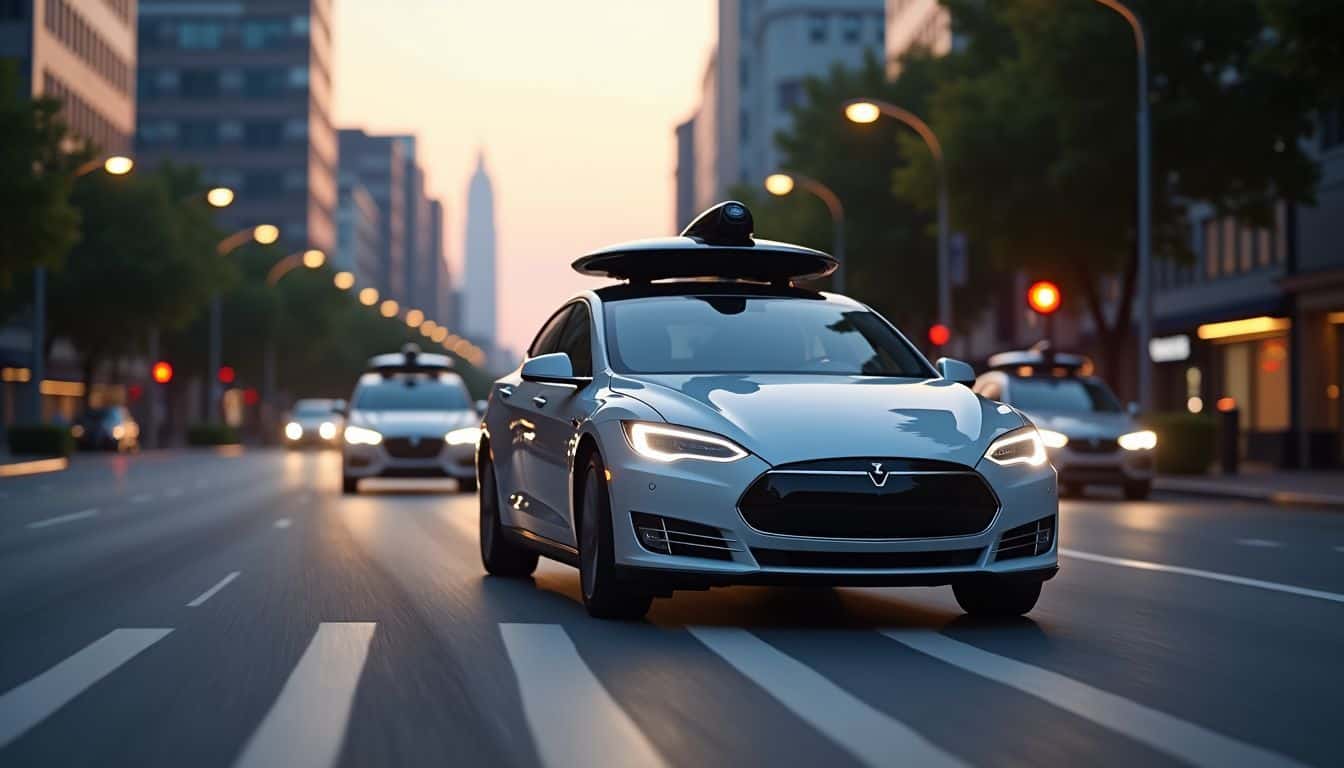
AI will shape how cars protect us in ways we can’t yet imagine. Smart cars will soon talk to each other and spot dangers before they happen, making our roads much safer than they are today.
Potential advancements in autonomous driving safety features
AI technology makes self-driving cars safer each day. Advanced sensors and smart algorithms help these cars spot dangers faster than humans. The latest safety features include better detection systems that work in harsh weather.
These systems use lidar and ultrasound to create a clear view of the road ahead. Many carmakers now focus on making their robotaxi systems smarter through real-time data analysis.
Self-driving cars now learn from every mile they drive. Their computers process road data to make split-second choices that avoid crashes. New safety tools watch for traffic jams and bad weather before problems start.
The cars share data with each other about road risks through special networks. These updates help cut down traffic accidents caused by human mistakes. Smart traffic systems work with these cars to reduce congestion on busy streets.
Integration of real-time monitoring and predictive analytics
Real-time monitoring systems in self-driving cars now use advanced driver assistance systems to spot dangers before they happen. These systems tap into cloud-based AI that studies traffic patterns and road conditions 24/7.
The Vehicle-to-Everything (V2X) tech lets cars talk to other vehicles, traffic lights, and road signs right away. This quick chat helps prevent crashes by warning drivers about risks ahead.
5G networks make predictive analytics faster and smarter in autonomous vehicles. Cars can now process huge amounts of data on the spot through LIDAR sensors and forward-collision warning systems.
Smart cities use this data to manage traffic flow better and cut down on accidents. The National Highway Traffic Safety Administration reports that these tools help reduce crash risks by spotting danger signs early.
Self-driving cars use this info to plan safer routes and avoid trouble spots before problems start.
People Also Ask
What causes most self-driving car crashes?
Most accidents with autonomous cars happen due to software malfunction, distracted driving, or problems with systems like Lidar. Issues with adaptive cruise control and lane departure warning can also lead to crashes.
How safe are Tesla’s Autopilot and other driverless systems?
While Tesla’s Autopilot and other advanced driver assistance systems help reduce accidents, they still need human oversight. The National Highway Traffic Safety Administration (NHTSA) tracks their safety record closely.
What fixes are making self-driving cars safer?
Better collision avoidance systems, improved cyber security, and smarter traffic congestion management are key fixes. Companies like Waymo and Cruise LLC keep updating their vehicle automation to boost driver safety.
Do autonomous vehicles help reduce air pollution?
Yes, self-driving cars can cut air pollution and fuel consumption. Their smooth acceleration/braking patterns and smart traffic management help improve air quality.
What are the different SAE levels in self-driving cars?
SAE J3016 defines levels from 0 to 5. Most current cars are at SAE Level 3 or 4, with some self-driving taxis reaching higher levels of car autonomy.
Are robotic cars better at avoiding road accidents than human drivers?
When working properly, autonomous vehicles have better reaction times than humans. Their advanced driving assistance systems can spot dangers at the speed of light, but they still face challenges in complex traffic situations.
References
https://www.warpnews.org/transportation/self-driving-cars-are-safer-than-human-drivers-study-shows/
https://www.lgrlawfirm.com/blog/examining-autonomous-car-accidents-and-statistics-2/ (2024-02-12)
https://www.askadamskutner.com/auto-accident/self-driving-cars/
https://www.brookoverlaw.com/blog/problems-with-self-driving-cars-pros-and-cons/
https://johnston-lawfirm.com/human-error-in-self-driving-car-accidents/
https://blog.httpcs.com/en/autonomous-cars-cyber-risks/ (2024-03-18)
https://www.meteosource.com/blog/weather-self-driving-vehicles-av
https://pmc.ncbi.nlm.nih.gov/articles/PMC8885781/
https://www.hauptman-obrien.net/blog/liability-in-self-driving-car-accidents/ (2024-08-19)
https://www.1800truckwreck.com/resources/the-role-of-government-regulations-in-preventing-self-driving-car-accidents/ (2024-12-28)
https://www.mdpi.com/2504-2289/8/4/42
https://www.sciencedirect.com/science/article/pii/S2772586324000674
https://www.propertycasualty360.com/2024/10/21/how-sensors-predict-and-prevent-auto-accidents/ (2024-10-21)
https://www.nhtsa.gov/vehicle-safety/automated-vehicles-safety
https://www.sciencedirect.com/science/article/pii/S0967070X23000264
https://medium.com/@mail_18109/5g-autonomous-vehicles-a-new-era-of-smart-transportation-ee5c7315c8b9
